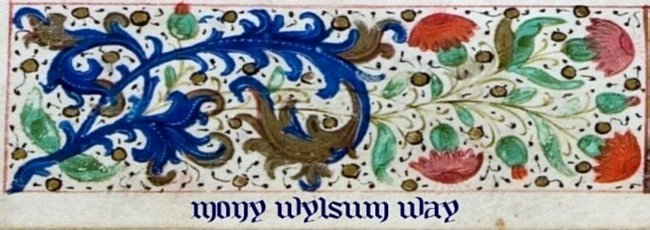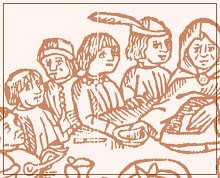The mediaeval romance, like any fantasy genre, is rich in the marvellous - the magical, the supernatural, the bemusing and the wonderously inexplicable. John Stevens[1] divides the marvellous into four types (pp 99-102):
1) The exotic - that which is marvellous because it is from some far-off land (the Orient, India, etc) but is not actually supernatural in any way, merely out of our reach.
2) The mysterious - that marvel which has no agent, "unmotivated, unexplained and inexplicable". Suddenly appearing castles or ships, talking animals or landscape features like a bridge made out of a sword belong to this category.
3) The magical - the marvellous controlled by man (including creatures like wizards or fairies). Morgan le Fay's vast array of send-away-for-the-magic-ointment/ring-of-your-choice artefacts all live here, as well as magic armour and swords.
4) The miraculous - the marvellous controlled by God. Miracles, divine aid or visions are the most common, and they usually occur in accounts of the Grail quest.
Like most general categorisations, as a theory it's neat and works well for most romances, particularly the ones written by poets who don't really rise above the ordinary and challenge the medium they're writing in. However, the attempt to apply it to Sir Gawain and the Green Knight shows how gently that poem refuses categorisation, in this as in other things.
1) The exotic - that which is marvellous because it is from some far-off land (the Orient, India, etc) but is not actually supernatural in any way, merely out of our reach.
2) The mysterious - that marvel which has no agent, "unmotivated, unexplained and inexplicable". Suddenly appearing castles or ships, talking animals or landscape features like a bridge made out of a sword belong to this category.
3) The magical - the marvellous controlled by man (including creatures like wizards or fairies). Morgan le Fay's vast array of send-away-for-the-magic-ointment/ring-of-your-choice artefacts all live here, as well as magic armour and swords.
4) The miraculous - the marvellous controlled by God. Miracles, divine aid or visions are the most common, and they usually occur in accounts of the Grail quest.
Like most general categorisations, as a theory it's neat and works well for most romances, particularly the ones written by poets who don't really rise above the ordinary and challenge the medium they're writing in. However, the attempt to apply it to Sir Gawain and the Green Knight shows how gently that poem refuses categorisation, in this as in other things.
[1] Medieval Romance: Themes and Approaches. London: Hutchison, 1973.


.jpg)


No comments:
Post a Comment